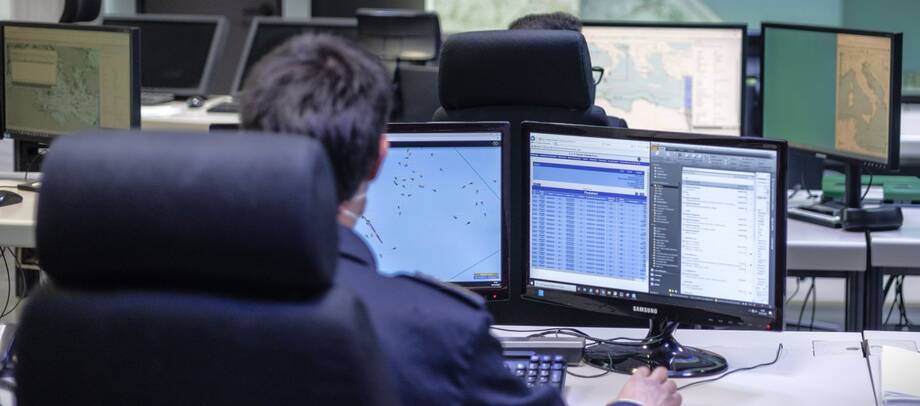For National Contact Points and Designated Ports information, please access the GIES directly
The Global Information Exchange System (GIES)
What is the Global Information Exchange System (GIES)?
What is the Global Information Exchange System (GIES)?
The Global Information Exchange System (GIES) is a software application, developed by FAO at the request of Parties to the Agreement on Port State Measures (PSMA).
The PSMA is the first legally binding instrument to specifically target illegal, unreported and unregulated (IUU) fishing. It provides a minimum set of measures for Parties to apply when a foreign-flagged vessel, having carried out fishing or fishing-related activities, seeks entry into or use of their ports. Effectively, it serves as a strong deterrent by limiting the capacity of fishing operators conducting IUU fishing to access international markets.
The GIES is the information-sharing mechanism foreseen under Article 16(2) of the PSMA. It is designed to support the implementation of the PSMA by providing an innovative digital tool that permits the sharing of vital information between port, flag, and coastal States, as well as other relevant organisations.
The GIES is the first global system exchanging compliance information. It supports Parties to the PSMA in fulfilling their obligation to share information among them with the purpose to take action against vessels involved in IUU fishing.
What information is shared through the GIES?
What information is shared through the GIES?
Information shared through the GIES includes denials for foreign vessels to enter into or use ports as well as reports of inspections conducted on such vessels in port. These denials and reports are notified through the GIES to those involved.
The sharing of this information effectively allows for States to take action against non-compliant vessels, for the building of compliance histories of vessels to feed risk analysis, as well as for the facilitation of cooperated action between States to ensure that conservation and management measures are being complied with.
Accredited users from States may compile information using online forms directly within the system, or choose to automatically connect to the GIES, either through an existing national or regional system.
The GIES uses internationally standardised lists and codes for different systems to be able to transfer information whilst also ensuring that the majority of the data inputted can be automatically translated into the six FAO languages, facilitating the work of State authorities who may be using different languages.
How is the GIES beneficial?
How is the GIES beneficial?
Those making use of the GIES are able to exchange information with concerned States, FAO and other entities on the results of inspections carried out on foreign-flagged vessels seeking entry and use of their ports, as well as on any denials and other measures taken when non-compliance with applicable fisheries laws and regulations is detected.
This exchange of information assists States in having timely access to certified information on compliance records of vessels, thus being in a better position to implement port State measures and subject non-compliant vessels to corrective action.
Due to its global scope, the GIES is also useful in monitoring the implementation of the PSMA at global scale and the compliance with other international fisheries instruments, regional conservation and management measures, and national laws.
Who uploads information?
Who uploads information?
Whilst FAO has been tasked with hosting, developing, upgrading and maintaining the tool, it is States that compile and exchange information using the GIES. The authority whose competency is to compile information into the GIES differs depending upon the national setup.
FAO assumes no responsibility for the contents uploaded in the GIES. More information is available in the Disclaimer.
The official PSMA National Contact Point within Parties to the PSMA can request credentials to access the GIES.
Who has access to the GIES and the information contained within it?
Who has access to the GIES and the information contained within it?
Forms exchanged within the GIES can be sensitive as they can include personal information or that with a compliance or commercial nature. As per the PSMA, due regard is taken for appropriate confidentiality requirements of the information being shared.
Therefore, only Parties to the PSMA are able to access the GIES and forms exchanged within the system are only sent to States or organisations relevant to that form.
In following with guidance received from Parties, due consideration was also taken throughout the development of the system to ensure a high level of security.
Is there a linkage between the GIES and the Global Record?
Is there a linkage between the GIES and the Global Record?
The GIES and the FAO Global Record of Fishing Vessels, Refrigerated Transport Vessels and Supply Vessels (Global Record) are two closely linked applications that have been developed by FAO at the request of Parties and FAO Members with the objective of combatting IUU fishing.
The FAO Global Record is a collaborative global initiative to make publicly available, in a timely manner, certified data from State authorities about vessels and vessel-related activities. The FAO Global Record plays a key role in support of the GIES by providing users certified identity information on foreign vessels requesting access to their ports, for verification purposes as well as facilitating the compilation process of forms.
Together, these tools facilitate the exchange of vessel identification, activity and compliance information, putting States in a better position to identify vessels suspected of having engaged in IUU fishing and take any necessary action and communicate their decisions to the vessel’s flag State, other relevant States and regional fisheries management organizations, to FAO and other relevant international organizations.


